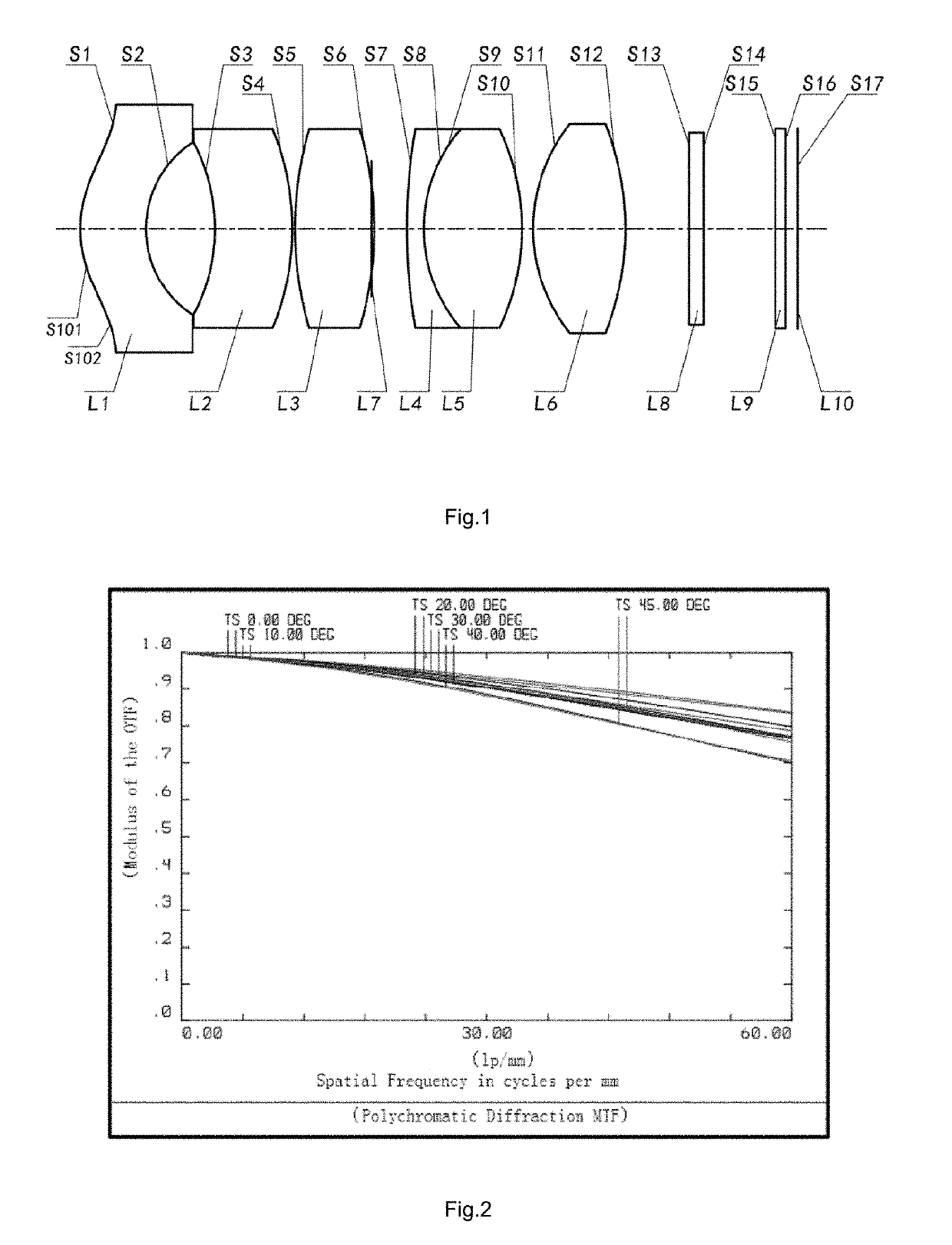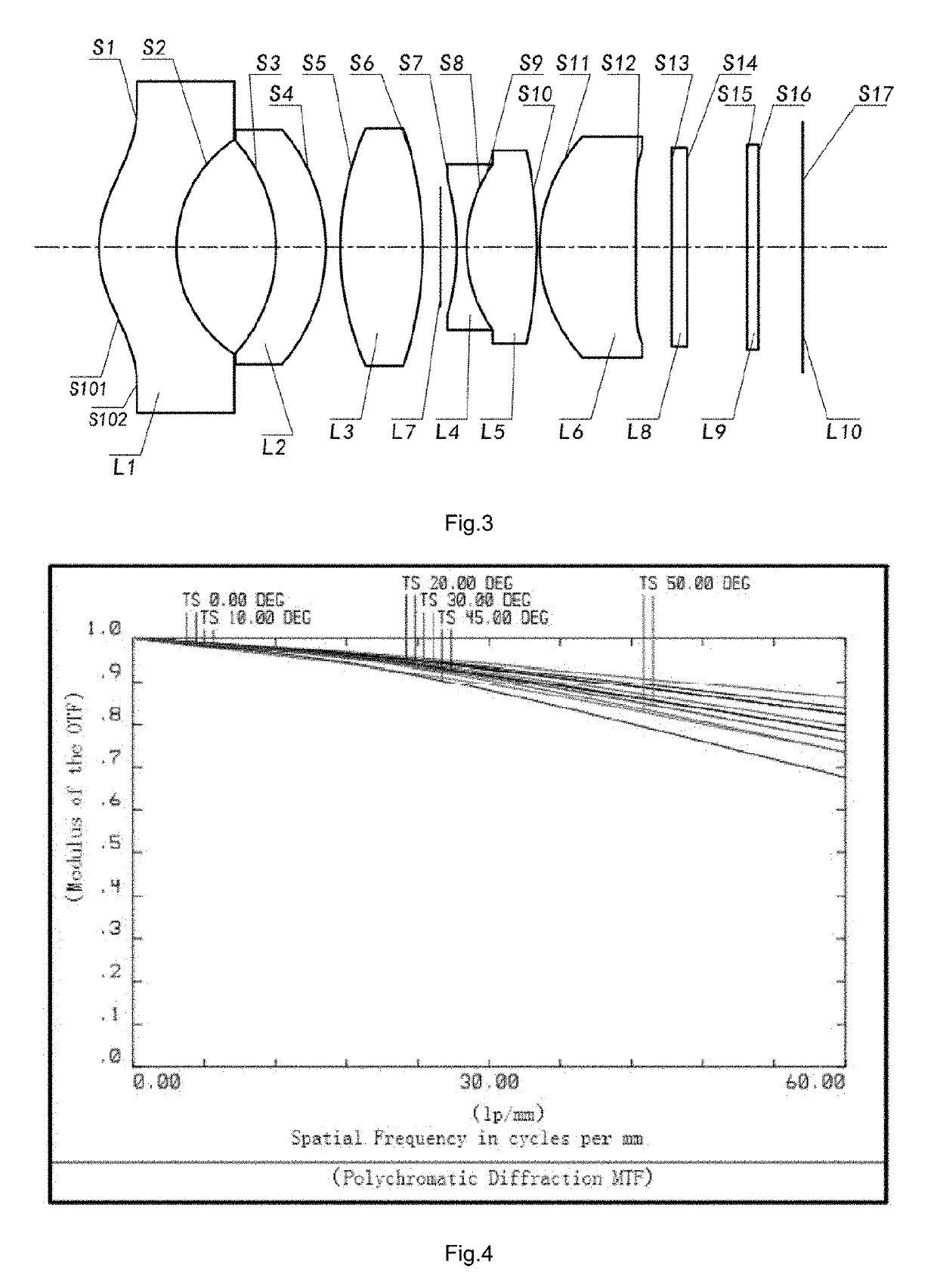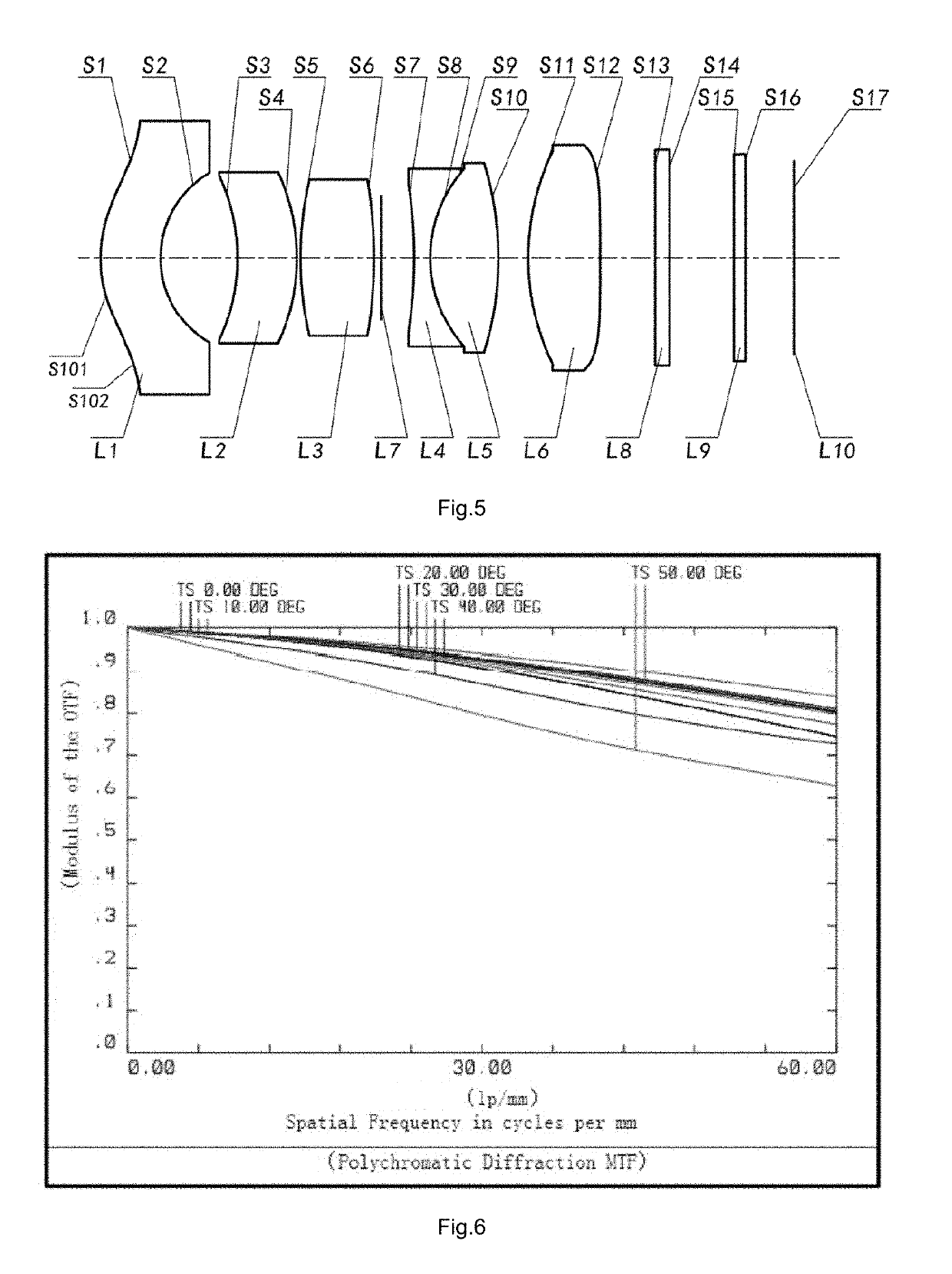Optical lens
a technology of optical lenses and lenses, applied in the field of optical imaging, can solve the problems of increased lens cost, limited field of view of lenses, and difficult observation of larger angle ranges around vehicles
- Summary
- Abstract
- Description
- Claims
- Application Information
AI Technical Summary
Benefits of technology
Problems solved by technology
Method used
Image
Examples
first embodiment
[0062]Referring to FIGS. 1 and 2 of the accompanying drawings, an optical lens according to the present disclosure is explained, wherein the optical lens includes at least one first lens L1, at least one second lens L2, a third lens L3, a fourth lens L4, a fifth lens L5 and a sixth lens L6. The first lens L1, the second lens L2, the third lens L3, the fourth lens L4, the fifth lens L5, and the sixth lens L6 are sequentially arranged along a direction from an object side to an image side.
[0063]The first lens L1 has a negative focal power, and the first lens L1 has an object surface S1 facing the object side and an image surface S2 facing the image side. According to this embodiment of the present disclosure, the object surface S1 of the first lens L1 is convex in order to increase the luminous flux of the optical lens. That is, the convex object surface S1 of the first lens L1 converges light at a larger angle to increase the luminous flux entering the optical lens from the object si...
second embodiment
[0107]Referring to FIGS. 3 and 4, an optical lens according to the present disclosure is explained, wherein the optical lens includes at least one first lens L1, at least one second lens L2, a third lens L3, a fourth lens L4, a fifth lens L5 and a sixth lens L6. The first lens L1, the second lens L2, the third lens L3, the fourth lens L4, the fifth lens L5, and the sixth lens L6 are sequentially arranged along a direction from an object side to an image side.
[0108]The first lens L1 has a negative focal power, and the first lens L1 has an object surface S1 facing the object side and an image surface S2 facing the image side. According to this embodiment of the disclosure, the object surface S1 of the first lens L1 is convex in order to increase the luminous flux of the optical lens. That is, the convex object surface S1 of the first lens L1 converges light at a large angle to increase the luminous flux entering the optical lens from the object side. Preferably, the object surface S1 ...
third embodiment
[0152]Referring to FIGS. 5 and 6, an optical lens according to the present disclosure is explained, wherein the optical lens includes at least one first lens L1, at least one second lens L2, a third lens L3, a fourth lens L4, a fifth lens L5 and a sixth lens L6. The first lens L1, the second lens L2, the third lens L3, the fourth lens L4, the fifth lens L5, and the sixth lens L6 are sequentially arranged along a direction from an object side to an image side.
[0153]The first lens L1 has a negative focal power, and the first lens L1 has an object surface S1 facing the object side and an image surface S2 facing the image side. According to this embodiment of the present disclosure, the object surface S1 of the first lens L1 is convex in order to increase the luminous flux of the optical lens. That is, the convex object surface S1 of the first lens L1 converges light at a larger angle to increase the luminous flux entering the optical lens from the object side. Preferably, the object su...
PUM
 Login to View More
Login to View More Abstract
Description
Claims
Application Information
 Login to View More
Login to View More - R&D
- Intellectual Property
- Life Sciences
- Materials
- Tech Scout
- Unparalleled Data Quality
- Higher Quality Content
- 60% Fewer Hallucinations
Browse by: Latest US Patents, China's latest patents, Technical Efficacy Thesaurus, Application Domain, Technology Topic, Popular Technical Reports.
© 2025 PatSnap. All rights reserved.Legal|Privacy policy|Modern Slavery Act Transparency Statement|Sitemap|About US| Contact US: help@patsnap.com



